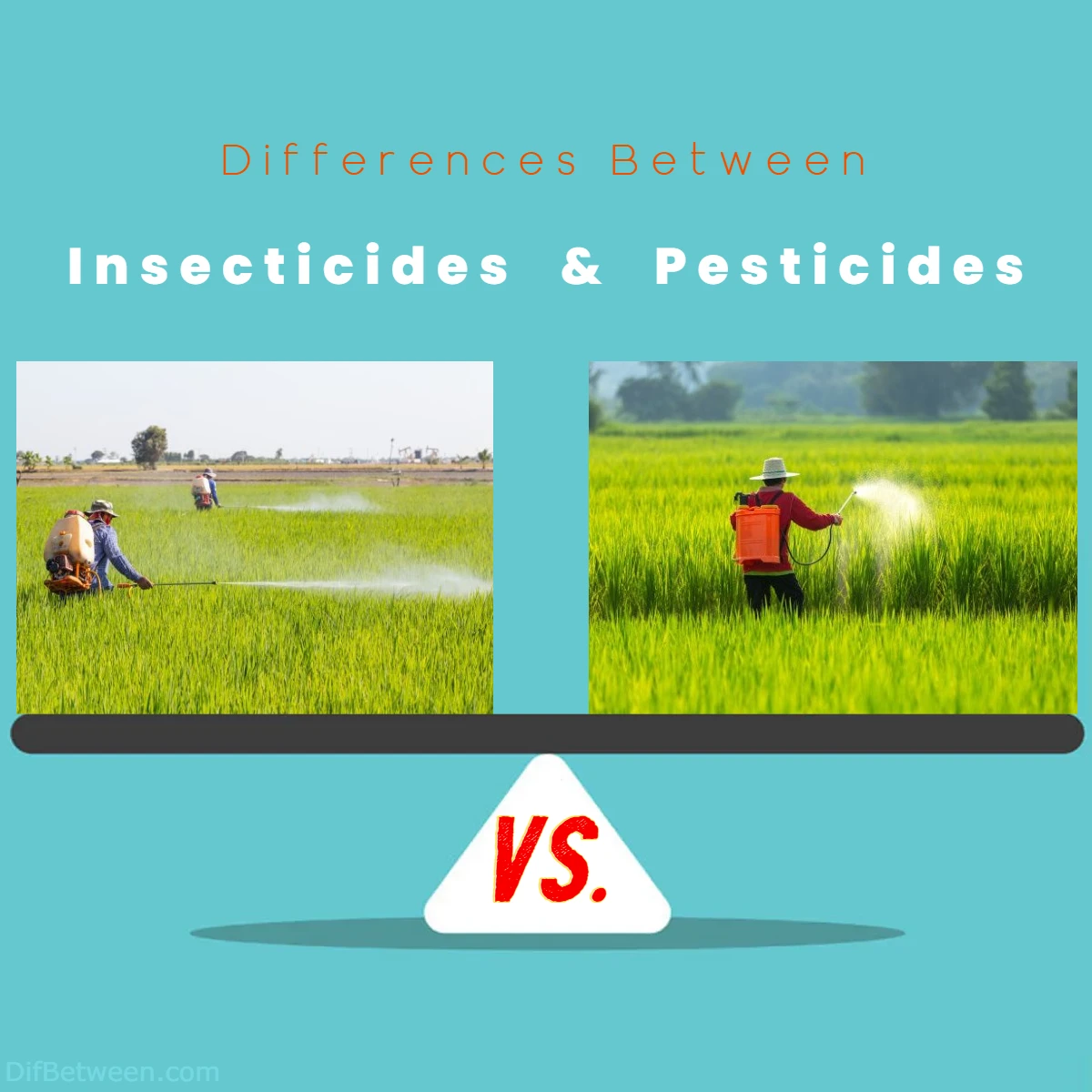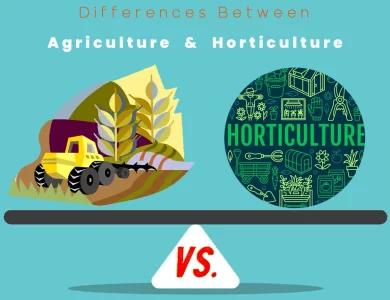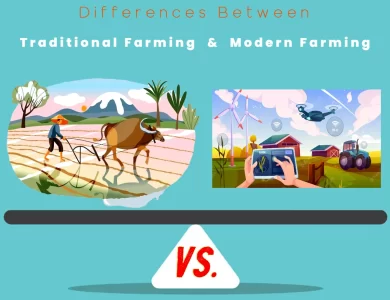
| Aspect | Insecticides | Pesticides |
|---|---|---|
| Definition | Subset of pesticides designed specifically for targeting insects. | Broad category encompassing various chemical agents for pest management. |
| Types | Insecticides are a type of pesticide. | Pesticides include insecticides, herbicides, fungicides, rodenticides, etc. |
| Target Organisms | Insects | Various pests including insects, weeds, fungi, rodents, and more. |
| Mode of Action | Specific mechanisms to disrupt insect life processes. | Diverse modes of action tailored to different pest types. |
| Application Methods | Sprays, powders, baits, etc. | Sprays, granules, baits, traps, and other methods based on pest type. |
| Selectivity | Varies, some are highly specific, others have broader spectrum. | Different pesticides exhibit varying levels of selectivity. |
| Environmental Impact | Can harm non-target insects and disrupt ecosystems. | Impact varies based on pesticide type and application. |
| Resistance | Insects can develop resistance over time due to genetic variation. | Resistance can occur in various pest types against different pesticides. |
| Regulation | Subject to regulations ensuring safety and efficacy. | Government agencies regulate various pesticides for human and enviro. |
| Economic Impact | Vital for protecting valuable crops and ensuring abundant harvests. | Broader role in managing various pests, contributing to economies. |
| Human Health | Designed to pose minimal risks to humans when used properly. | Safety measures and guidelines to minimize risks to applicators. |
| Public Perception | Public perception can vary due to environmental and health concerns. | Public perception influenced by media, education, and experiences. |
| Future Trends | Evolving with scientific advancements for more targeted and safer solutions. | Embracing technology, precision application, and sustainable practices. |
| Goal | Control insect populations to protect plants, humans, and animals. | Manage a range of pests affecting agriculture, health, and environment. |
Imagine a knight facing off against dragons – that’s the heart of our tale. In one corner stands the specialized champion, the insecticides. These remarkable defenders are designed to tackle the six-legged scourges that chew through our beloved greens, spreading chaos and despair. Enter the grand army of pesticides! These seasoned generals lead a diverse battalion armed with an array of tools – from insecticides to herbicides, rodenticides to fungicides – each ready to wage war against a specific adversary.
Differences Between Insecticides and Pesticides
The main differences between insecticides and pesticides lie in their scope and purpose. Insecticides are a subset of pesticides specifically designed to combat insects, focusing on targeted mechanisms that disrupt insect life processes. On the other hand, pesticides encompass a broader category of chemical agents that combat various pests, including insects, weeds, fungi, and rodents. While insecticides have a more specialized role in addressing insect-related issues, pesticides offer a versatile arsenal to tackle a wide range of pest challenges, making them an essential tool in integrated pest management strategies.
Defining the Duelists
Insecticides: Imagine a noble knight solely focused on vanquishing dragons. In the world of pest control, insecticides play the role of that specialized champion. These are a subset of pesticides specifically designed to target insects – those six-legged adversaries that chew through our plants, spread diseases, and generally make a mess of things.
Pesticides: Now, let’s widen the scope. Picture a grand army, equipped to tackle a multitude of threats, from marauding insects to voracious rodents and cunning weeds. Pesticides, in their entirety, are the seasoned generals leading this diverse force. They encompass insecticides, herbicides (for weeds), rodenticides (for rodents), fungicides (for fungi), and more.
The Marvelous Modes of Action
Insecticides: As our knight prefers a sword to slay dragons, insecticides have their weapons of choice – active ingredients engineered to disrupt specific aspects of an insect’s life. These chemicals are like targeted spells, aiming to disable the pests without causing undue harm to other organisms. Some insecticides attack the nervous system of insects, effectively short-circuiting their ability to function. Others interfere with their growth, molting, or reproduction, slowly but surely decimating their populations.
Pesticides: Think of pesticides as a versatile arsenal with a multitude of weaponry. Just as different foes require different tactics, various classes of pesticides are tailored to address specific threats. Herbicides, for instance, might hinder the photosynthesis process in plants, leading to their demise. Rodenticides, on the other hand, might target rodents’ digestive systems, delivering a fatal blow. This multifaceted approach ensures that the grand army of pesticides is well-equipped to tackle an array of challenges.
The Battle for Selectivity
Insecticides: Our gallant knight faces the challenge of distinguishing between dragons and innocent villagers. Similarly, insecticides grapple with the issue of selectivity. While they’re designed to target insects, the precision of this targeting can vary. Some insecticides are highly specific, zeroing in on a single insect species, while others have a broader spectrum of activity, affecting multiple insect types. Achieving the right balance between effective pest control and minimal harm to non-target organisms is a delicate art.
Pesticides: In the broader realm of pesticides, selectivity becomes an intricate dance. While the ultimate goal is to eliminate threats, the unintended casualties must be minimized. Herbicides, for instance, should ideally harm only weeds and spare crops. Achieving such selectivity requires deep understanding, rigorous testing, and constant refinement to strike the equilibrium between protection and preservation.
Environmental Impact: A Matter of Concern
Insecticides: Our knight’s actions could inadvertently disturb the harmony of the kingdom. Similarly, the use of insecticides can have ecological consequences. Non-target insects, such as pollinators (bees, butterflies, etc.), can fall victim to these chemical interventions. This unintended collateral damage can disrupt ecosystems, affecting the reproduction of plants and the survival of animals higher up the food chain.
Pesticides: The grand army of pesticides, when not employed judiciously, can leave its mark on the environment. Chemical residues might find their way into water bodies, soil, and even our food. This underscores the need for integrated pest management strategies that combine various approaches – from biological controls to cultural practices – to minimize the reliance on chemical interventions and mitigate their broader impact.
Resisting Resistance
Insecticides: Even the mightiest knight can face adversaries who learn to adapt. Similarly, insects can develop resistance to insecticides over time. The more an insecticide is used, the higher the likelihood that some insects survive due to natural genetic variation. These survivors then reproduce, passing on their resistance genes to their offspring, rendering the insecticide less effective over generations.
Pesticides: Resistance isn’t limited to insecticides; it’s a challenge faced by various pesticide classes. Whether it’s herbicides that no longer faze weeds or rodents that shrug off rodenticides, this adaptive prowess of pests keeps us on our toes. To combat resistance, a holistic approach is imperative. This includes rotating different classes of pesticides, using them in combination, and integrating non-chemical solutions to maintain the upper hand in the battle against pests.
The Regulatory Landscape
Insecticides: Just as our knight operates under a code of chivalry, insecticides are subject to rigorous regulations. Before they can enter the market, they must undergo comprehensive testing to assess their efficacy, potential risks to humans, non-target organisms, and the environment. Only those that meet stringent safety standards are granted the mantle of approval.
Pesticides: The expansive domain of pesticides is closely monitored by regulatory bodies. Government agencies analyze reams of data to ensure that these pest-fighting agents are doing more good than harm. From determining safe usage levels to setting residue tolerances in food, their oversight is aimed at safeguarding human health and the intricate tapestry of our ecosystems.
The Battle of Application Methods
Insecticides: Our noble knight has mastered the art of wielding a sword, but different foes require different approaches. Similarly, insecticides can be deployed through various application methods. They can be sprayed onto plants as liquids, dispersed as fine powders, or even embedded into baits to lure and eliminate pests. The choice of application method depends on the type of insect, the extent of the infestation, and the environment in which they operate.
Pesticides: Just as the grand army employs diverse strategies on the battlefield, pesticides also offer an assortment of application techniques. Herbicides might be sprayed directly on weeds, or they could be applied as pre-emergent or post-emergent treatments. Rodenticides can be placed in bait stations, while fungicides may be applied as foliar sprays or soil drenches. This versatility ensures that the right tool can be chosen for the task at hand.
Economic Considerations and Crop Protection
Insecticides: Our gallant knight safeguards the kingdom’s treasures. Similarly, insecticides play a pivotal role in protecting valuable crops from the relentless assault of pests. By controlling pest populations, insecticides help ensure abundant harvests, which in turn supports the global food supply and sustains economies. However, the economic benefits must be weighed against the costs, both monetary and environmental, of using these chemicals.
Pesticides: The grand army of pesticides extends beyond crop protection. Herbicides, for instance, aid in managing invasive plant species, restoring natural habitats, and maintaining landscapes. Rodenticides play a role in protecting structures and preventing the spread of diseases carried by rodents. The economic implications are broad, as the strategic use of pesticides can mitigate financial losses due to pest-related damages.
Human Health and Safety Concerns
Insecticides: Our knight’s armor shields them from harm on the battlefield. Likewise, insecticides are designed to pose minimal risks to human health when used correctly. However, there are precautions to be taken, such as avoiding direct contact, following safety guidelines, and adhering to recommended waiting periods before harvesting crops treated with insecticides.
Pesticides: Safety is paramount in the realm of pesticides. Stringent regulations dictate acceptable levels of pesticide residues in food and water to safeguard human health. Proper handling, protective equipment, and adherence to guidelines are vital for those applying pesticides. Education and awareness campaigns contribute to reducing the risk of mishandling and promoting responsible pesticide use.
Public Perception and Awareness
Insecticides: The tale of our knight’s exploits inspires legends. Similarly, public perception can cast a heroic or villainous light on insecticides. These chemicals have been instrumental in averting famines and improving agricultural productivity. However, concerns over environmental impact, effects on non-target organisms, and residues in food have led to debates and calls for more sustainable pest management practices.
Pesticides: Public perception of pesticides is influenced by various factors, including media coverage, educational campaigns, and personal experiences. Balancing the benefits of pest control with potential risks is crucial in shaping public opinion. Encouraging transparency, sharing information on the proper use of pesticides, and promoting integrated pest management can foster a more informed and supportive stance from the public.
Emerging Trends and Future Horizons
Insecticides: Our valiant knight evolves with the times, embracing new weaponry and strategies. Similarly, the world of insecticides is undergoing transformation. With advances in science and technology, researchers are exploring innovative ways to enhance the effectiveness of insecticides while minimizing negative impacts. From developing more targeted formulations to harnessing biological agents, the future promises safer and more sustainable pest control solutions.
Pesticides: The grand army of pesticides marches into the future with innovation as its guiding star. The integration of digital tools, such as remote sensing and data analytics, is enabling precision application, reducing waste, and optimizing results. Sustainable practices like agroecology, which emphasize ecological principles, are gaining ground. This shift towards holistic approaches is poised to reshape the landscape of pest management.
FAQs
Insecticides are a subset of pesticides that specifically target insects. Pesticides, on the other hand, encompass a broader category of chemical agents designed to combat various pests, including insects, weeds, fungi, rodents, and more.
No, insecticides are a type of pesticide. While insecticides are tailored to control insect populations, pesticides as a whole include a range of chemical agents for managing different types of pests beyond insects.
Insecticides have specific mechanisms of action that disrupt insect life processes, such as their nervous system or growth patterns. Pesticides work by employing various modes of action depending on the pest type, whether it’s inhibiting photosynthesis in plants (herbicides), disrupting fungal growth (fungicides), or targeting rodents’ digestive systems (rodenticides).
Yes, some insecticides can harm non-target organisms, such as pollinators like bees and butterflies. This is why careful application and consideration of environmental impact are crucial in pest management strategies.
Yes, both insecticides and pesticides are regulated by government agencies to ensure their safety and efficacy. They undergo rigorous testing before being approved for use in order to protect human health and the environment.
Yes, both insecticides and pesticides can have environmental impacts if not used properly. They can lead to the unintended disruption of ecosystems and leave chemical residues in soil, water, and food. This highlights the importance of responsible and sustainable pest management practices.
Yes, pests can develop resistance to both insecticides and other types of pesticides. Over time, some pests may survive due to genetic variation, passing on their resistance to the next generation. This emphasizes the need for diverse pest management strategies to combat resistance.
Insecticides play a vital role in protecting valuable crops and ensuring abundant harvests. Pesticides, as a broader category, contribute to managing various pests affecting not only agriculture but also health, environment, and structures.
Yes, both insecticides and pesticides are evolving with advancements in science and technology. Researchers are exploring innovative solutions for more targeted and effective pest control methods. Additionally, the integration of digital tools and sustainable practices is reshaping the landscape of pest management.
The goal of using insecticides is to control insect populations and protect plants, humans, and animals. Pesticides, in general, aim to manage a diverse range of pests to safeguard agriculture, health, and the environment while promoting balanced ecosystems.
Read More:
Contents
- Differences Between Insecticides and Pesticides
- Defining the Duelists
- The Marvelous Modes of Action
- The Battle for Selectivity
- Environmental Impact: A Matter of Concern
- Resisting Resistance
- The Regulatory Landscape
- The Battle of Application Methods
- Economic Considerations and Crop Protection
- Human Health and Safety Concerns
- Public Perception and Awareness
- Emerging Trends and Future Horizons
- FAQs






